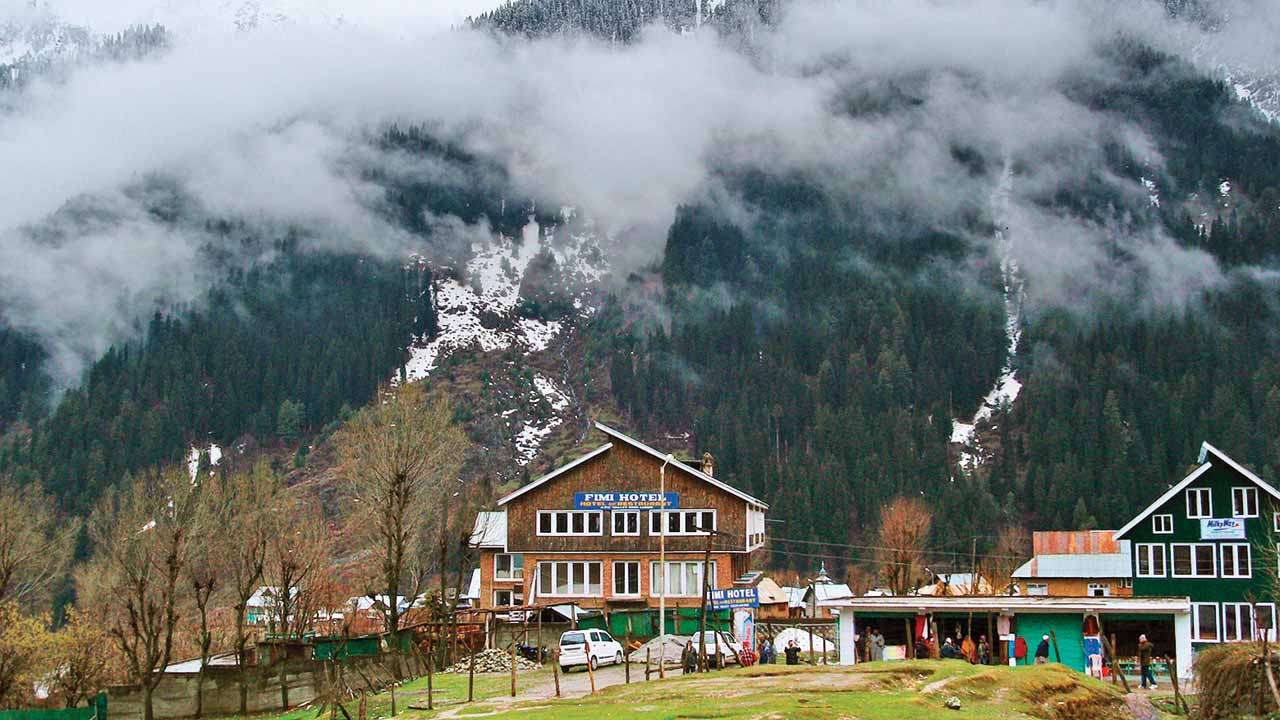
After the fateful terror attack on a bus carrying Amarnath Yatra pilgrims on July 10, 2017, tourist traffic to Kashmir Valley was massively affected. However, deep high in the tiny village of Aru in South Kashmir’s Pahalgam mountain range, few Israeli backpackers were still sitting cosy, unperturbed by the turbulence.
The remote picturesque village some 100-kilometres from Srinagar has been a favoured destination of Israeli backpackers, who would stay there in droves between May and October. The Hebrew signboards and the villagers conversing in Hebrew makes this village look like an Israeli settlement outside the Jewish state. Upstream from the Lidder River, known for its scenic meadows, lacks and mountains, the village is a base camp for trekking to the Kolhoi Glacier and Tarsar Lake.Braving media coverage of disturbances and advisories issued from their own embassies, Israeli tourists have kept this village alive, even though arrival has trickled.
Media coverage of disturbances in Kashmir has forced many Israeli backpackers to stay away. Israeli Embassy had also issued advisories on not visiting Kashmir. But a friend who had taken a chance to arrive in the village wrote on a tourist website, pleading his countrymen not to believe in media coverage. “Aru is as peaceful as it had been. So at first instance, I packed my baggage in Himachal and came here,” he said.
Local hoteliers also find them easy going tourists, who don’t make much fuss and are less demanding. “They don’t need a caretaker. They clean their rooms themselves, help us in the kitchen to prepare their choice of food and never complain about anything,” said a hotelier.
Even though often Kashmiris would take to streets to exhibit their bonding with Palestinians, Israeli backpackers say, they found people very hospitable and the beauty of place worth to take risks. Most of the Israeli tourists spend weeks trekking to upper reaches with state of art telescopes, which they say are supposed to enhance their experience of, “bird watching”.
After a lesser known militant group, Pasdaaran-e-Inqilaabi-e-Islam (PID) had tried to abduct seven Israeli nationals, who were playing cards inside the Garden of Heaven House Boat in Srinagar, in 1991, Israeli government had issued an advisory. They issued it again in 1995 after five western backpackers were kidnapped from Pahalgam mountains.
Since then foreign tourist traffic had come to trickle. But it again picked up last year. Besides Aru that attracted Israeli tourists, till the 1990s, many Israeli and Jews would trek deep into the mountains of the North Kashmir district of Bandipora, where according to a belief lies a Jewish grave— dating back to the pre-Islamic period.
It lies inside the shrine complex of Hazrat Bibi Arifa, a lady saint locally known as ‘Ded Mouj’. Hundreds of devotees would visit the remote hilly village of Butho, till militancy took over the region two-and-a-half decades ago. A section of Jews believes that the grave belongs to their most revered Prophet Moses, who brought them back to Palestine some 4,000 years ago.Moses is also highly revered by Muslims.
In this village Ghulam Muhammad Reshi, custodian of the shrine, maintains a diary with entries of many visitors who visited this picturesque village from countries as far as Uganda, Thailand, France, Germany and America. They had read about the “burial site of Moses” from some books and articles on the web. The village remains cut off from the rest of the valley in winters. “I told them they were mistaken, and Musa (Moses) is not buried in the shrine here,” says Reshi. The direction of the grave is contrary to how the Muslims bury their dead. A decade ago, an American woman stayed in the village weeks spending nights meditating inside the shrine.According to Pandit Hargopal Koul’s ‘Guldasta-I-Kashmir’, Kashmiri Pandits are the highest class of Aryans. Pandit Ram Chand Kak, Prime Minister of Jammu and Kashmir (1945-47) says, ‘Moses is a very common name in Kashmir. There are many castes and tribes among Muslims and Hindus, which are mentioned in the Bible. Their ways and habits, features, shapes, morals, and character resemble those of Israelis.
At Bijbehara near Anantnag town, there is a stone called ‘ka ka pal’ (ka in Kashmiri means eleven) resembling eleven tribes of Israel. Such a stone is also to be found at Baramulla. Former civil servant turned writer, Kashmiriologist, Pervez Dewan, in his book, 'A history of Kashmir', writes, “There can be no doubt that Jews used to visit ancient pre-Islamic Kashmir at the rate of one or two visitors a year. They were particularly honoured guests. This explains their stamp on some aspects of Kashmiri life. Some of them must have settled in Kashmir and accepted Hinduism (and later Islam). That explains why some Kashmiris have the ‘prominent noses’ that have intrigued European travellers so much.”
His study also highlights Hebrew words in the Kashmiri language and makes a pointed reference some Jewish customs, food habits and beliefs found in Kashmir. On the specific question of the visit of Lord Jesus and Prophet Moses, Dewan banks on the manuscripts of the Bhavishya Maha Puran, Mullah Nadiri’s Tareekh-e-Kashmir and an ancient Buddhist manuscript in the Hemis caves in Ladakh. “If these documents have not been tampered with, then there can be no doubt but that Lord Moses have lived for a while in Kashmir and Ladakh,” he concludes.
Fact or not, belief keeps what would be the holiest shrine of Judaism and the myth of Moses’ visits alive in the heart of a remote Muslim-dominated Kashmiri village. Beyond the defence and security relationship, may the spirituality and belief be a much greater force to bring countries together and also to bridge relations between Jews and Muslims—a panacea to bring the world in order and peace.
The author is Editor, strategic affairs, DNA